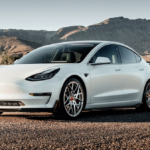Big Players Faced with Soaring Production Costs-The aim is to increase the production of local goods and encourage the other countries to buy US products in an effort to alleviate the economic challenges posed by the Covid-19 outbreak. Because of that large trade surplus, Vietnam has become an important production hub for those companies.
Nike, for instance, says a large amount of its shoe and clothing manufacturing occurs in Vietnam. Indeed, the company had sourced around half of its footwear and 28 percent of its apparel from this part of the world last financial year (FY) 2024. A major part of Adidas’ production (39% of its footwear and 18% of its apparel) is also reliant on Vietnam.
The usual US tariff rates on footwear are 13.6%, and on apparel from Vietnam 18.8% (US Customs and Border Protections data compiled by the US Fashion Industry Association). An upsurge in these rates will increase operating costs for these companies. Naturally, this is as Nike has been discounting already in order to work down various inventory levels.
Repercussions Throughout the Industry and Production Moves
The possible tariff threats extend well beyond Nike and Adidas, triggering an array of other sportswear brands. Businesses are also moving production out of China, and Vietnam has emerged as a favoured supplier of high-tech running shoes, sportswear and outdoor clothing. So do brands such as Lululemon, Columbia Sportswear and Amer Sports, which owns Salomon and Arc’Teryx: All rely on Vietnam for a significant portion of their production.
Smaller, faster-growing brands like on are even more reliant on Vietnamese manufacturing. It sources a high percentage of its goods from Vietnam — 90% of its shoes and 60% of its clothing and accessories come from the country. Price strategies have become a factor now that tariffs loom, in particular for premium brands.
Average prices of shoes in the United States have been climbing since 2019 thanks to rising production costs and demand. The market for running shoes in the US has grown, but new numbers showed a drop in consumer confidence, meaning hiking prices further at consumers could prove trickier.
Relocating production from Vietnam also entails costs and logistics. Other southeast Asian countries, such as Cambodia and Indonesia, could also potentially get caught up in tariff revisions if production costs also continue to rise there. Factories in Cambodia, for instance, are increasing prices in reaction to rising orders from organizations seeking to shift their production to other nations.
Strategies and Adaptations in the Market
And the tariffs are unlikely to be at the same levels as those that have been assessed on Chinese imports, industry experts said, as they scrutinized possible tariffs on Vietnamese imports, particularly for apparel. Some of the mill of Vietnamese government to strengthen relations with the United States, this includes a commitment to increase its exports to the United States, reduce duty on imports, as well as by the United States not generally available and banned in China directly in China, including App with the smooth running of satellite internet.
It will also foster favourable trade relations and climate through Trump Organization — which will be bringing in investments for many of its partners in Vietnam, especially for its 5-Star Hotel, Properties and Golf Course joint projects in Vietnam as well. The US President has a positive overall relationship with Vietnam that might play into tariff policies, Wilbur Ross, former US commerce secretary said.
Moreover, the sector has a history of strategic flexibility. Brands are considering the potential for tariff changes in setting prices. Upper tier brands, particularly, might have more flexibility in altering their price schemes.
Economic and Geopolitical Counter-Mechanisms Border
The raw mechanics of the US-Vietnam trade landscape from economic and geopolitical drivers have been heavily nuanced. Vietnam serves as a manufacturing hub for numerous global corporations, therefore showing its economic leverage due to its geographical significance.
It also reflects on how the Vietnamese government is keen to foster closer ties with the US, pledging more imports, and lowered duties. The results are worrying and leave economic forecasts hazier still, particularly as potential deals with the Trump Organization unfold in Vietnam.
But above this reality as inescapable as the sun the roar of the engines of world trade relations never ceases, indeed with the movement of labour from nations regularly in a constant state of play with tariff negotiate always being negotiated. Something to watch is how this could retail prices and the marketplace.
Industry Responses, and What’s Next
Sportswear brands had been watching closely for updates on whether US tariffs would be added to imports from Vietnam. Companies in response have begun calculating how much of an economic difference such an increase would make on their supply chain and whether they would need to make a dent to soften the financial blow.
The industry has demonstrated an ability to respond to changing market dynamics. Other steps may include restructuring their pricing models or widening the geographic footprint of their manufacturing operations, as well.
The final decisions on tariffs along with other economic and geopolitical factors would determine the sportswear industry outlook going forward. How the industry rides out these challenges will depend on coherent planning and agility.






